WORLD TRAVEL NEWS ARTICLE OMAN
OMAN
'Oman’s New and Old Capitals' by Gillian Thomas
With a delectable choice of five-star beach-side hotels, Muscat is both a tourist resort and busy working city. Increasingly geared to visitors, it caters particularly for those wanting ‘sun, sand and somewhere different’.
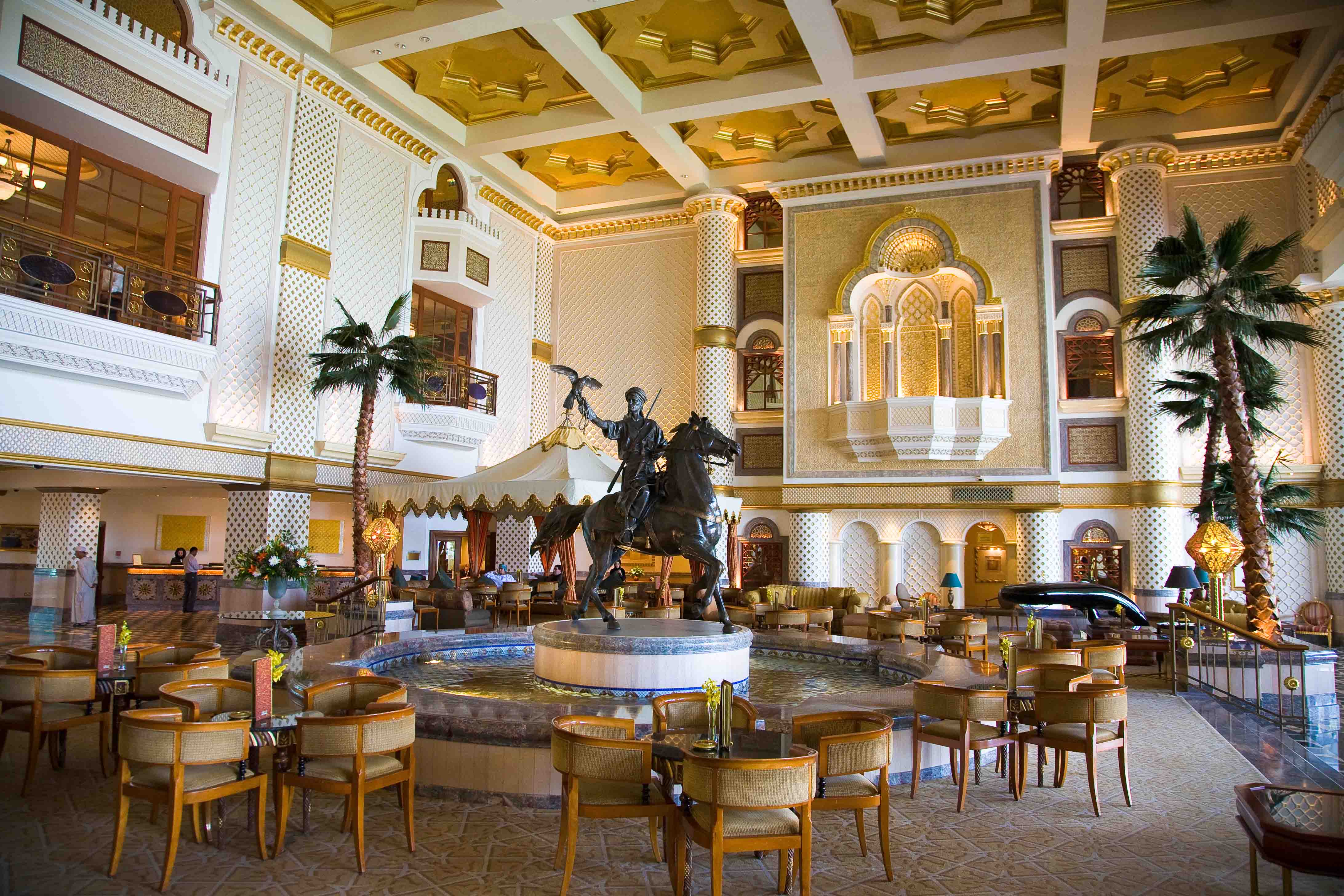
The Hyatt Hotel - Muscat
Sun it has in abundance. October to April are the most comfortable months, whereas the temperature in summer can reach the 50s. Long sandy beaches line much of its northern coast on the Gulf of Oman.
The differences between this hospitable Muslim country and Europe strike you immediately. Indeed it is the government’s policy to maintain the country’s distinctive Arabian culture.
High-rise buildings are banned and new ones must include traditional features like archways, flat roofs and white walls. Signs are in Arabic (though most are in English too, a legacy of Oman becoming a British protectorate in 1890).

Omani men in Nizwa market
Omani men, from teachers to tourist guides, are required to wear national dress - an ankle-length white gown (dishdasha), flat brimless embroidered hat (kumah) and sandals. Women wear colourful tunics over loose trousers, though many younger ones prefer all black. In general women have the same opportunities as men by way of education, work and lifestyle.
Exploring Muscat I always felt very welcome and safe. Even in the famous Mutrah covered souk, I was scarcely hassled as I wandered along its maze of narrow alleyways crowded with small shops selling frankincense, silver, household items, spices and pashminas.
Outside it, the waterfront curves round a headland to a fish market which is at its liveliest around 6.30am when the fishermen drag their boats onto the beach and unload their incredibly diverse catches.
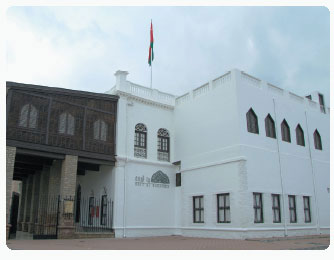
Bait Al Baranda Museum
Also in the Mutrah area is Bait Al Baranda, a fine old mansion recently converted into an imaginatively laid-out museum devoted to the 5000-year history of Muscat. Using video, models and artefacts, it covers everything from early archaeology and Oman’s conversion to Ibadi Islam in 640 AD to the present day. Photographs of the city before and after 1970 illustrate how the current Sultan, clearly a benign dictator, has brought Oman dramatically up-to-date since he ousted his backward-looking father in 1970.
I found that exploring Muscat is best done by car as it stretches for several miles around rocky headlands and bays, all squeezed between the sea and a ridge of barren limestone hills. Luxurious hotels like the Grand Hyatt, Chedi, Shangri La and Al Bustan Palace are dotted along the coast.
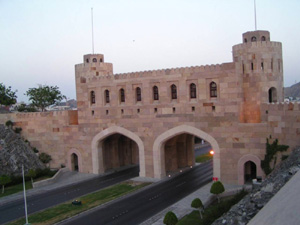
Muscat Gate
Muscat’s port, for centuries the centre of one of the world’s busiest trading routes, is overlooked by the Mirani and Jalali forts which are perched on rocky outcrops on either side. Between them the gold and turquoise exterior of Al Alam Palace, the main home of Sultan Qaboos, can be seen from its impressive gates.
A short stroll away, the Bait Zubair museum gave me a real insight into different aspects of the Omani lifestyle. It displays collections of traditional clothes and jewellery, swords and household items such as incense burners and rosewater sprinklers, all with excellent explanations in English.

Sultan Qaboos Grand Mosque
Built at the expense of the Sultan in 2001, the Sultan Qaboos Grand Mosque is certainly worth fitting into any sightseeing schedule. Open to visitors between 8.30am and 11am (not Fridays), it is the third largest in the world and has many lavish features such as a vast prayer carpet which was handmade in Iran and 37 chandeliers. The largest, glittering with 6000 dazzling Swarovski crystals, hangs from the central dome,
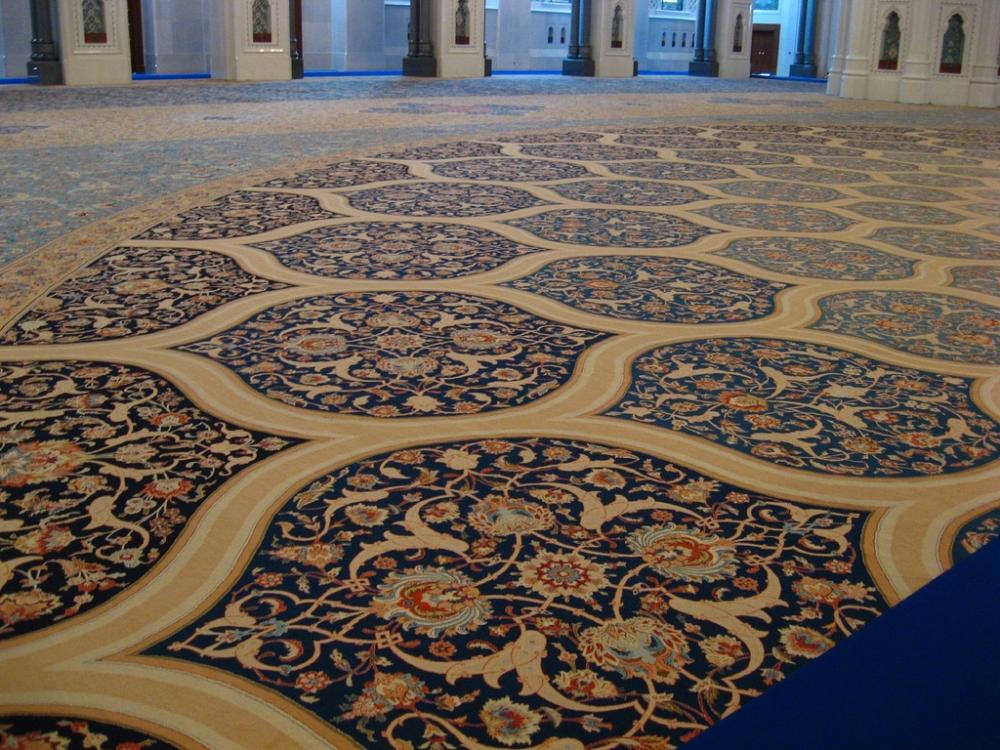
Part of the giant Prayer Carpet
To visit Nizwa, which was the capital of Oman until the 7th century, I took a guided tour; various itineraries are on offer, either for a day or longer, combing wadis and the desert. The city is 110 miles from Muscat along motorways which run through dramatic scenery that becomes increasingly mountainous with dry barren ridges and peaks.
The best time to be in Nizwa is before 10am on a Friday when its livestock market takes place. This is a highly entertaining affair when farmers, dressed in dishdashas and kumahs, lead their often stubborn cows, goats and sheep round and round a ring of prospective buyers, loudly negotiating the price while also trying to control their unruly beasts.

Nizwa
Nizwa has different souks devoted to fish, vegetables, spices and silver. Beside them, an elegant mosque and 17th-century fort overlook the town centre. Now carefully restored, the fort is dominated by a huge open citadel from which a climb of 39 steps is rewarded by views over the wadis and date palm plantations to distant hillsides dotted with ancient fortifications. The interior of the fort houses an exhibition which vividly portrays Oman’s history and culture.
Our local contact recommended that tourists also explore the area of Al Hamra town with its houses dating back over 400 years old, giving an interesting glimpse of the past. With so many interesting tourists sites in the region they recommend staying overnight here. They suggest staying in an unusual luxury tented hotel with, as the name suggests, amazing views called The View. www.theviewoman.com
'Salalah' by Tim Ware
Deserts are landscapes of brutal simplicity. For those who live there, they offer so little, materially, and yet demand so much. But on a different level, they offer experiences to heighten the senses – stunning scenery and, as David Attenborough will testify, thrilling wildlife.
These thoughts flash through my mind when I travel to Oman’s Empty Quarter. This is a desert in the truest sense of the word - a vast area of sand dunes rolling to infinity where you really do get the feeling of being in the middle of nowhere. And yet… As Florence is to Italy so the Empty Quarter is to Oman – an apogee of what the country represents in most people’s imagination. If your time is short – and for most people it is - ensure only that you make a visit here to extract a proper essence of Arabia.
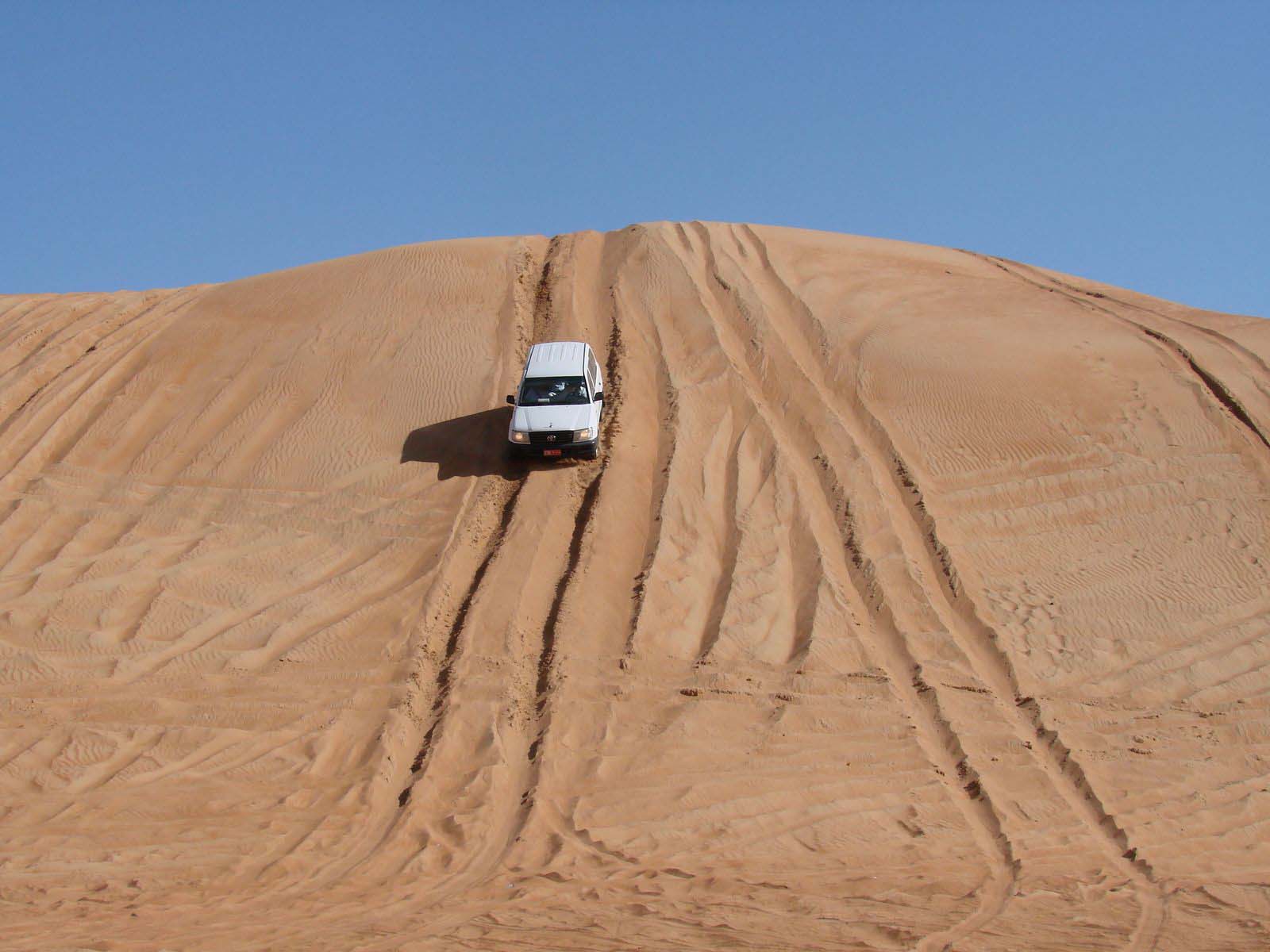
Desert excursion
The starting point for an excursion into the Oman desert is Salalah, the country’s second largest city and capital of the Dhofar region. Salalah is in the south west corner of the country, less than 100 miles from the Yemen border. We reached the Empty Quarter in a posse of four-wheel drive vehicles. It’s the only way to travel without, that is, resorting to a camel Lawrence of Arabia style.
As we progress the scenery is rapidly changing. The green of the coast quickly gives way to the brown scrub of the interior – almost a biblical scene, through which camels, naturally designed for this environment, amble in apparent indifference to all around them. As you would expect, the camel is a prized commodity here – and not just as a beast of burden. Our guide Malad, a serene, softly-spoken man of mild manner, tells us the meat of the animal is delicious, particularly if the animal is raised in a warm place.
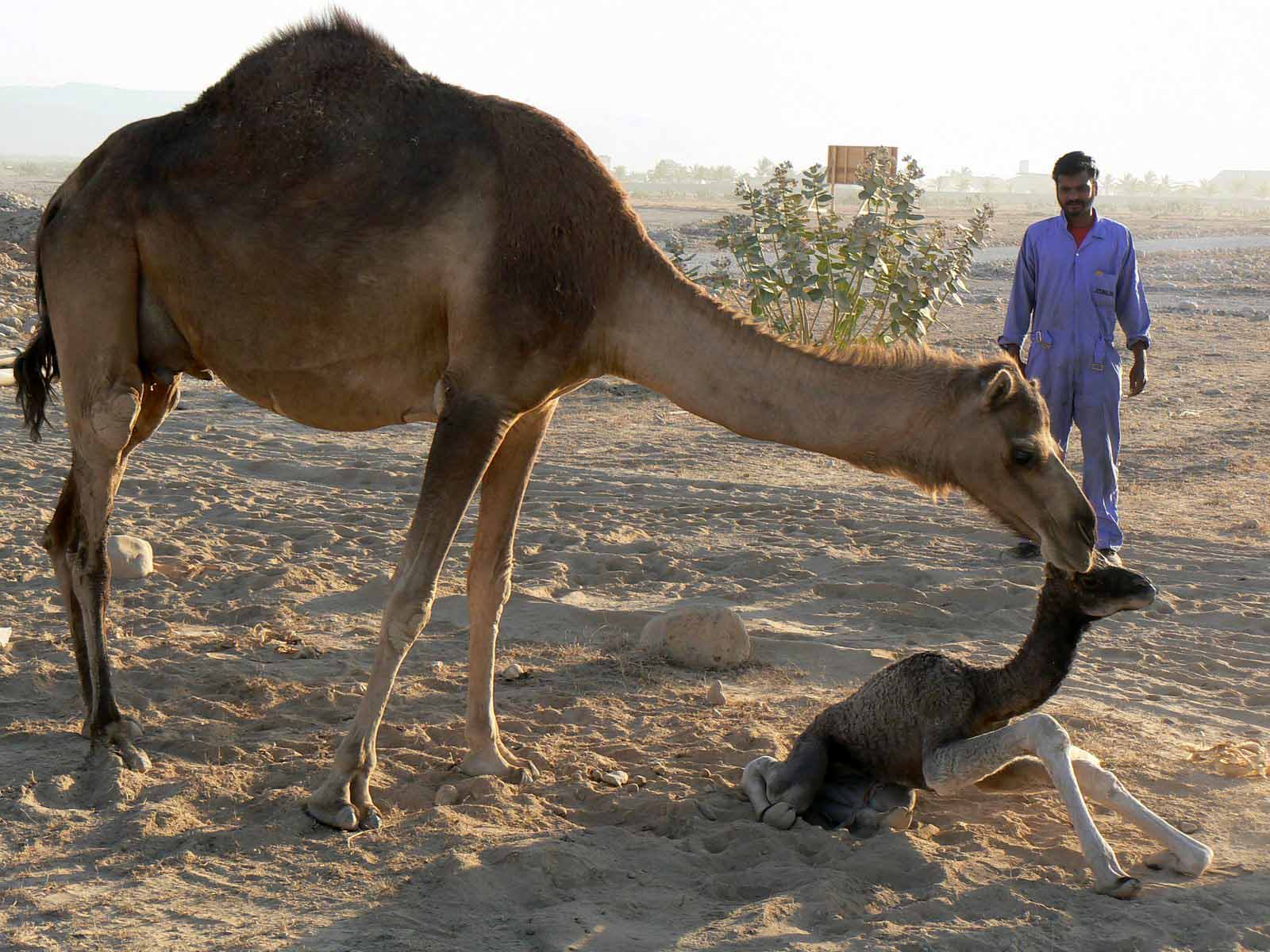
Salalah camel and baby
Initially, the scenery is punctuated by ranges of jagged, austerely beautiful mountains that change colour according to the time of day. As the sun moves, the colours change subtly through various shades of purple, orange and blue. I could have watched this shifting kaleidescope all day, but there was little enough time to explore so we pressed on.

Job's Tomb
First up on the itinerary is Job’s tomb. If this isn’t the final resting place of the prophet – and there is some doubt as to whether it is - it should have been. The tomb is built atop a modest hill. The setting is certainly biblical and sublime. From the tomb you look out in one direction across the Salalah plain and in the other to serrated mountains.
Along the way Malad has one or two surprises for us up his sleeve. A short distance from the coast we climb into the mountains and, on a lonely stretch of ungraded road close to the town of Mirbat, Malad beckons us out of the vehicle. This is Salalah’s famed anti gravity spot where an optical illusion is supposed to give the impression that a car, when put in neutral and going downhill, gives you the impression that it is going uphill.
The trouble is it doesn’t – at least not for me or, apparently, my fellow travellers. When we ask why, Malad gives us one of his knowing smiles and says it hasn’t really worked since the road was given a layer of tarmac! So much for modern inventions…
The farther we went from the coast the more arid the land becomes. After an hour or so we turn off the main Salalah to Muscat highway on to what is nothing more than a well-grooved track through the sand. At last we are in the Empty Quarter proper – the sand rolling away as far as the eye could see in a series of switchback dunes, constantly shifting to the whims of the winds that blow through the forlorn, but achingly beautiful, landscape.
We stop at Dawkah where, in the middle of this wilderness, over an area covering five square kilometres, the ground is besieged with boswellia sacra, better known as the frankinsense tree. The tree – little more than a bush in reality - provides the magical resin which has been used in perfumes. It’s been traded on the Arabian peninsula for more than 5,000 years. It grows to no more than 15 feet and its value is in its bark. The resin is then stripped out from the bark and allowed to harden. Like a good wine, it varies in character according to soil and climate – the clearer the resin the better the quality.
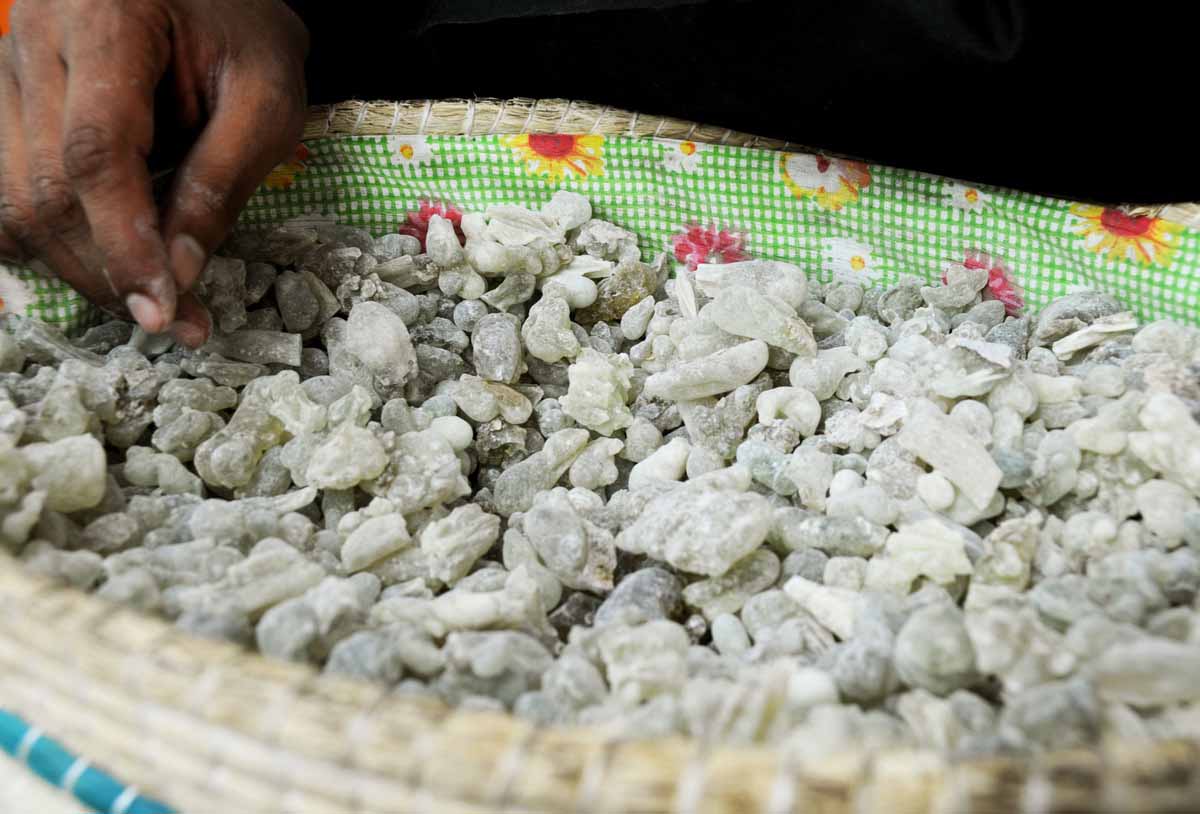
Frankinsense from Salalah
With the sun now at its hottest, we beat a hasty retreat for a picnic lunch of sandwiches, fruit and cake, enjoyed under a canopy of trees, at an oasis in the middle of nowhere.
Then it was back to Salalah, but there was time for a mini drama en route. Shortly after rejoining the main road we get a puncture in the front tire and the Land Cruiser lurched towards the ditch, the driver skilfully correcting the resulting skid and bringing the vehicle back under control.
The wisdom of travelling in convoy quickly became apparent. Punctures are a frequent hazard in the desert. But rather like tire changers at a Formula 1 grand prix event, Malad and his friends get the job done in double quick time and we’re soon on our way again.
Back on the coast, there is time to appreciate Salalah, a functional rather than beautiful provincial city, but the shopaholics among us enjoyed a visit to the souk. But, thanks to the khaleef – monsoon season – the surroundings are beautiful.
From June to September the tail end of the Indian monsoon clips the south west corner of the Arabian peninsula, cloaking the area in cool and misty weather, transforming the normally parched landscape into a riot of colour. Behind the coconut-fringed beaches are banana groves and fields of mango and papaya. I felt momentarily that I’d been transported to the Kenyan coast.
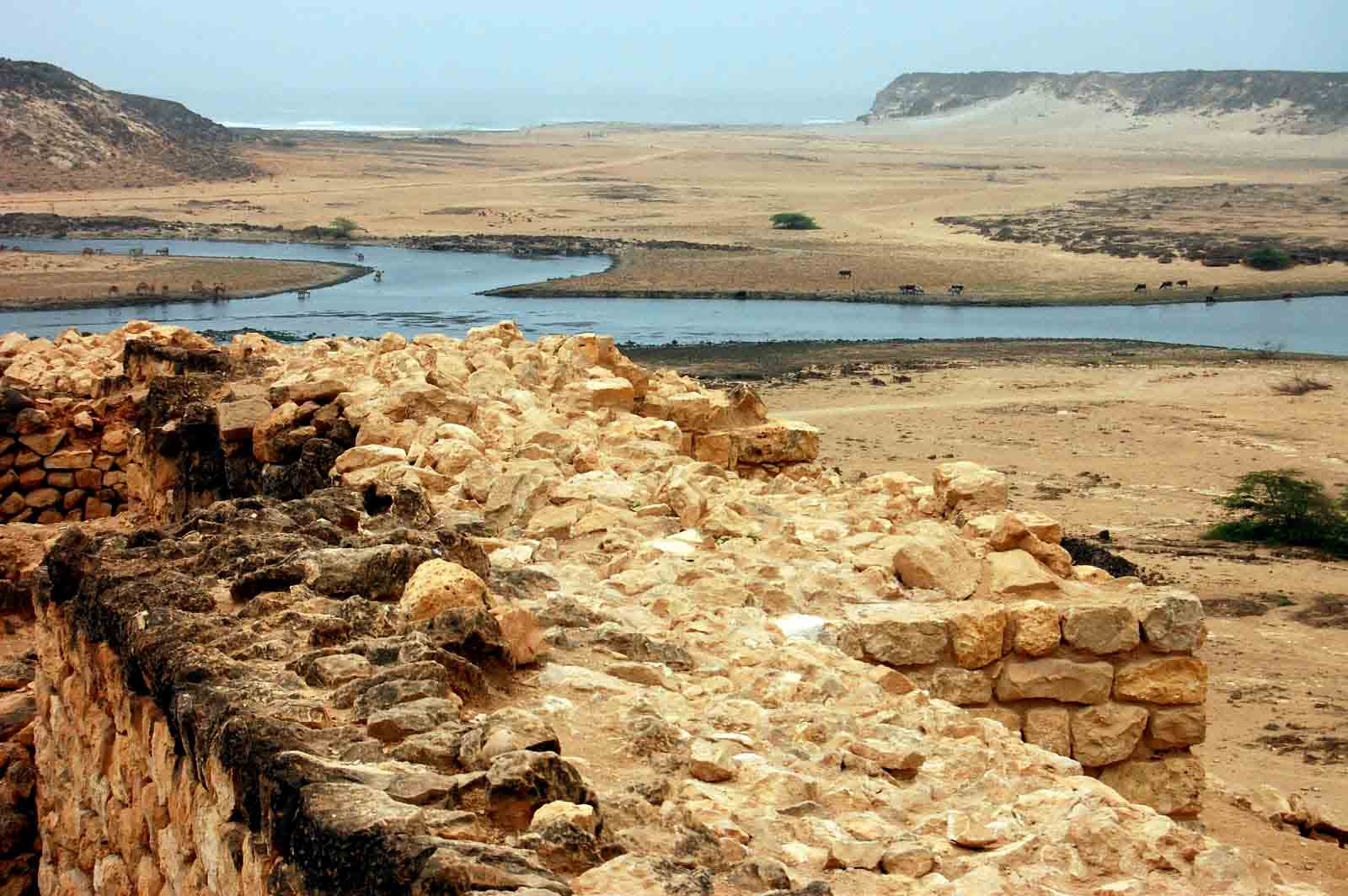
Mirbat
And there are places to unwind – lovely beaches of pure sand and beside them a growing number of hotels. The Marriott just outside Mirbat ticks all the boxes if you want to enjoy a little R and R. Rooms are spacious and well furnished and the food caters for both middle eastern and western palates.
But in the final analysis I’m bowled over not by the coast or even the worthy Marriott, but by the allure of the desert. Oman has so much more than the bling of Dubai. It offers, as one traveller observed, the ‘immortal beauty of immortal things.’
For more information visit: www.omantourism.gov and Oman Air - www.omanair.com
You may also like to read
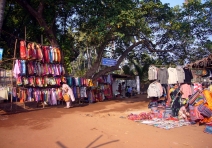
INDIA - RETREATING TO GOA
Tour-smart relaxes you with a visit to Goa.
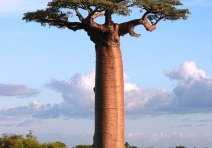
MADAGASCAR - THE MAGIC
Tour-smart takes us to the fourth largest island in the world that lies 400 kilometres off the east coast of Africa.


Comments